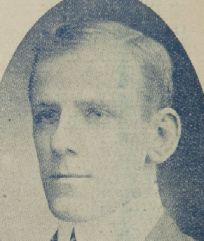
Haydn William Bunton was an Australian rules footballer who represented Fitzroy in the Victorian Football League (VFL), Subiaco in the West Australian Football League (WAFL), and Port Adelaide in the South Australian National Football League (SANFL) during the 1930s and 1940s.

Laurence John "Laurie" Nash was a Test cricketer and Australian rules footballer. An inductee into the Australian Football Hall of Fame, Nash was a member of South Melbourne's 1933 premiership team, captained South Melbourne in 1937 and was the team's leading goal kicker in 1937 and 1945. In cricket, Nash was a fast bowler and hard hitting lower order batsman who played two Test matches for Australia, taking 10 wickets at 12.80 runs per wicket, and scoring 30 runs at a batting average of 15.

Australian rules football began its evolution in Melbourne, Australia about 1858. The origins of Australian football before 1858 are still the subject of much debate, as there were a multitude of football games in Britain, Europe, Ireland and Australia whose rules influenced the early football games played in Melbourne. Teams would have to agree before each match which rules would be followed, and different aspects of association football, Gaelic football, rugby football, Sheffield rules, Cambridge rules Winchester College football, Uppingham and Harrow football were apparent in the early games.

Ivor Warne-Smith, was an Australian footballer, who played for the Melbourne Football Club in the Victorian Football League and for the Latrobe Football Club in the North-Western Football Union in Tasmania. During his time with Melbourne he won two Brownlow Medals, played in their 1926 premiership side, was captain-coach of the club and represented his state of Victoria on numerous occasions. Warne-Smith remained involved with the club for the rest of his life and was named in the Melbourne Football Club Team of the Century. He was also named in the Tasmanian Team of the Century. Warne-Smith fought in both World War I and World War II.

Cyril Bruce Andrew was an Australian rules footballer, who played for Collingwood Football Club in the Victorian Football League (VFL) before becoming a football administrator and television commentator.
Likely Herman "Like" McBrien OBE was a leading Australian rules football administrator in the Victorian Football League (VFL) and a Victorian politician.
John Cameron "Jack" Sheedy is a former Australian rules footballer and coach. He played for East Fremantle and East Perth in the Western Australian National Football League (WANFL) and South Melbourne in the Victorian Football League (VFL). Sheedy is considered one of the greatest ever footballers from Western Australia, and is a member of both the Australian and West Australian Football Halls of Fame. Overall, he played 360 senior football matches from 1946 to 1962, kicking 528 goals, and coached 272 games, with a winning percentage of 65%.

George Richard Peckham Beachcroft was an influential early administrator of the Richmond Football Club.

Donald Pruen Cordner, M.B.B.S. was an Australian rules footballer who played with Melbourne in the Victorian Football League (VFL) during the 1940s. His brothers Denis, John and Ted also played for the club.
Donald Robert Argus AC is an Australian businessman, Chairman of Bank of America Australia Advisory Board and Member of Monash University's Monash Business School Advisory Board. He is a former Member of Bank of America's inaugural Global Advisory Council (2013-2019); former Chairman of BHP Billiton (1999-2010) and Brambles (1999-2008), former Director of the Australian Foundation Investment Company (1999-2013) and former CEO of National Australia Bank (1991-1999). He was educated at the Anglican Church Grammar School.
Patrick Yost Walsh was an Australian rules footballer who played with the Essendon Football Club in the VFL/AFL.
Noel Laurence Allanson is a former Australian rules footballer who played with Essendon in the Victorian Football League (VFL).

Francis Ernest "Frank" Langley was an Australian rules footballer who played for the Melbourne Football Club in the Victorian Football League (VFL) during the early 1900s.
Albert William "Tim" Trevaskis was an Australian rules footballer who played for North Melbourne in the both the Victorian Football Association (VFA), and the Victorian Football League (VFL).

Frederick Henry "Harry" Harker was an Australian rules footballer who originally played for the Brunswick Football Club in the Victorian Football Association (VFA) and then played for the Melbourne Football Club in the Victorian Football League (VFL).

William Morris Musson Flintoft, commonly called Bill Flintoft, was an Australian rules football player with the Melbourne Football Club and the St Kilda Football Club in the Victorian Football League (VFL). He played Victorian Premier Cricket for the Melbourne Cricket Club. Flintoft also served in the First Australian Imperial Force in World War I. In later life Flintoft was Mayor of Prahran, on the Committee of the Melbourne Cricket Club, and on the Board of the Melbourne Football Club, serving as president of the latter for three years.

Andrew Arthur Albert Manzie was the secretary of the Melbourne Football Club for 20 years, from 1912 to 1931. Before being secretary of Melbourne, Manzie held the same role at Richmond Football Club for five years.

Kenneth Slater was an Australian sportsman who played Australian rules football and tennis at the highest level. He played his football with Hawthorn in the Victorian Football League (VFL) and competed in two Australian Tennis Championships.
William George Wells was an Australian rules footballer who played with North Melbourne and St Kilda in the Victorian Football League (VFL). He was injured during the war and told he was expected to spend the remainder of his life in a wheelchair, but made a successful comeback. After leaving the VFL he played for various clubs, including three stints with Williamstown in the Victorian Football Association (VFA). He also coached in the Wimmera Football League and Ballarat Football League.
John James Liston was an Australian businessman, civic leader, and sporting administrator. He served as Mayor of Williamstown and on the Melbourne City Council, and was also a long-serving president of the Victorian Football Association.












